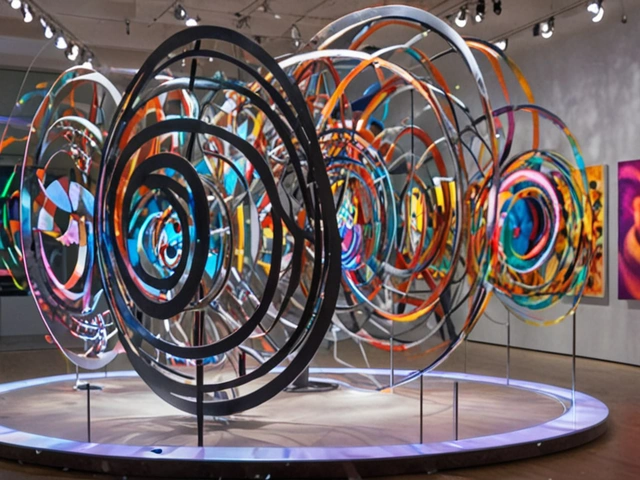Origins of Post-Impressionism
As we dive into the evolution of art, it's fascinating to observe how each movement emerges as a response or a rebellion against its predecessor. Post-Impressionism, blossoming in the late 19th century, marks a distinct departure from the fleeting impressions of the natural world captured by the Impressionists. Instead, it sought to offer a more thoughtful, analytical approach to painting. The term 'Post-Impressionism' itself was coined by art critic Roger Fry in 1910, during an exhibition in London. Despite its seemingly unified title, Post-Impressionism encompasses a variety of individual styles, ranging from the emotional turbulence of Vincent van Gogh to the calculated 'pointillism' of Georges Seurat.
Key Figures and Their Contributions
Speaking of these artists, it becomes impossible not to delve deeper into their lives and works. Vincent van Gogh, with his vibrant color palette and impassioned brushstrokes, brought emotions to the forefront of the canvas. A quote from van Gogh himself encapsulates his approach:
'I dream of painting and then I paint my dream.'Paul Gauguin, meanwhile, sought escape from European civilization, finding inspiration in the exotic landscapes and peoples of Polynesia. Gauguin's quest for a primal form of expression influenced his bold use of color and symbolic imagery. Georges Seurat introduced a methodical aspect to Post-Impressionism with his development of pointillism, applying small distinct dots of color to form an image. This technique emphasized the role of science and order in art.
Methodologies and Techniques Divergence
Exploring their methodologies reveals a common desire among these artists to push beyond the surface appearances that Impressionism so cherished. They aimed to explore the underlying structures and forms of their subjects. This intention is evident in the way these artists manipulated color and form to convey more depth and emotional resonance. Van Gogh's 'Starry Night' exemplifies this, where the tumultuous sky swirls around stars that burst with an almost divine light. Similarly, Seurat's 'A Sunday Afternoon on the Island of La Grande Jatte' showcases his meticulous pointillism technique, which brings a new dimension to a seemingly ordinary scene.
The Influence on Future Movements
The legacy of Post-Impressionism is monumental, laying the groundwork for various modern art movements. Its emphasis on personal expression paved the way for Expressionism, while its structural investigations foreshadowed the advent of Cubism. Arguably, every major art movement of the 20th century owes something to the advancements made by the Post-Impressionists. This period of experimentation and diversity set a new precedent for what art could be, encouraging future artists to continually challenge the status quo.
Post-Impressionism in the Public Eye
The reception of Post-Impressionist works has evolved significantly over time. Initially met with skepticism and even ridicule, the bold styles and techniques of the Post-Impressionists were later celebrated for their contribution to the extensive vocabulary of modern art. Today, exhibitions of Post-Impressionist art draw crowds worldwide, and pieces like Van Gogh's 'Sunflowers' have become iconic. Their popularity underscores the enduring appeal and relevance of Post-Impressionism in contemporary culture.
Critical Reception and Artistic Philosophy
Understanding the critical reception of Post-Impressionism during its infancy provides insight into the radical nature of this movement. Critics of the time struggled to comprehend the departure from naturalism and the embrace of abstraction. Yet, the Post-Impressionists were united by a belief in the importance of an artist's perspective and the expression of inner feelings over the replication of the external world. This philosophy signified a profound shift in the purpose of art, from capturing life to interpreting it.
Gauguin's Vision of the Primitive and the Exotic
Paul Gauguin's pursuit of a more 'primitive' form of expression led him to Tahiti, where he sought to escape the constraints of European society. His works from this period, rich with vibrant colors and mythological themes, offer a romanticized view of the exotic. Gauguin's influence on the art world was not just in his stylistic choices but in his quest for authenticity and a return to the basics of human expression. This has inspired countless artists to explore beyond their cultural confines, seeking new sources of inspiration.
Legacy and Continuing Influence of Post-Impressionism
Concluding our exploration, the impact of Post-Impressionism cannot be overstated. It challenged convention, encouraging a freedom of expression that has influenced countless artists and movements. From the bold explorations of Fauvism to the geometric ponderings of Cubism, the seeds planted by Post-Impressionism have grown into the diverse landscape of modern art. Its legacy is a testament to the unending pursuit of innovation and the expression of the intangible aspects of human experience through art.



